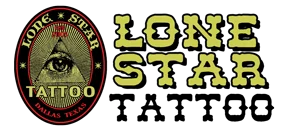You’re staring at that tattoo in the mirror again. The one that made perfect sense five years ago but now feels like a permanent mistake etched into your skin. Maybe it’s your ex’s name, maybe it’s a design that didn’t age well, or perhaps it’s just in the wrong spot for your career goals. Whatever brought you here, you’re not alone – and tattoo artists have seen it all.
The Reality Check You Need
Here’s what most tattoo artists won’t tell you upfront: removal isn’t the magical eraser you’re hoping for. It’s not like hitting “undo” on a computer. Your skin has memory, and that memory runs deep.
Every tattoo artist has watched clients walk in with stars in their eyes, thinking laser removal will transport them back to virgin skin. The truth? You’re embarking on a journey that’s often more challenging than getting the original tattoo. Your artist has probably seen the disappointment when clients realize what they’re really signing up for.
The science is straightforward but unforgiving. Laser removal works by breaking down ink particles so your immune system can flush them out. While it sounds simple, your body, doesn’t care about your timeline or pain tolerance. It works at its own pace, and some inks are stubborn!
The Pain Factor: Brace Yourself
Remember getting your American classic tattoo? Now imagine that sensation amplified and concentrated into rapid-fire pulses. That’s laser removal. The comparison most clients make is having a rubber band snapped against their skin repeatedly, but that’s being generous.
Different areas hurt differently. Ankle tattoos? Brutal. Ribs? You’ll question your life choices. Areas with thin skin and lots of nerve endings will have you gripping the treatment table. The good news is that each session is relatively quick – usually 15-30 minutes. The bad news is you’ll be back for more.
Pain tolerance varies wildly between people. Some clients breeze through sessions while others need breaks every few pulses. Don’t feel embarrassed if you’re in the latter group. Your artist has seen grown men cry over a small wrist tattoo removal.
Topical numbing creams help somewhat, but they’re not miracle workers. Some clinics offer stronger numbing options, but even those have limits. The pain is part of the process, and there’s no way around it.
Time Commitment: Think Years, Not Months
If someone promised you’d be tattoo-free in a few months, they lied. Most tattoos require 6-15 sessions spaced 6-8 weeks apart. That’s a minimum of one year, often closer to two or three.
Your immune system dictates the timeline, not the laser. Factors affecting removal speed include:
- Your age and overall health
- Tattoo size and location
- Ink colors and quality
- How deep the original artist went
- Your skin type and healing ability
Black and red inks typically respond best to laser treatment. Blues and greens take longer. Yellow and white? They’re the marathon runners of tattoo removal – stubborn and slow to fade.
Professional tattoos with high-quality ink often take longer to remove than amateur work. Ironic, isn’t it? The better the original tattoo, the harder it is to erase.
The Scarring Reality
Here’s what keeps tattoo artists up at night: scarring. Not everyone scars, but it’s always a possibility. Your skin is being repeatedly traumatized by laser energy, and some skin types react more aggressively than others.
Hypertrophic scars – those raised, thick areas – can develop, especially if you don’t follow aftercare instructions religiously. Hypopigmentation is another concern, where the treated area becomes permanently lighter than surrounding skin. Sometimes you’ll end up with a “ghost” outline of your original tattoo.
Proper aftercare is crucial. This means keeping the area clean, avoiding sun exposure, and resisting the urge to pick at scabs. Your artist will stress this because they’ve seen too many clients sabotage their results through poor aftercare.
The Stubborn Tattoos: What Makes Removal Harder
Some tattoos fight removal like their lives depend on it. Tribal work with heavy black filling can be surprisingly stubborn. Cover-ups are nightmares – all those layered inks create a complex puzzle for the laser to solve.
Stick-and-poke tattoos can be tricky because of inconsistent ink depth. Sometimes they fade quickly, other times they cling to your skin like they’re paying rent. Hand-tapped tattoos often have the same unpredictability.
Colors matter enormously. Green ink, especially older formulations, can be incredibly resistant. Purple and blue inks often require specific laser wavelengths that not every clinic has. Yellow and white inks sometimes darken under laser treatment before they fade – if they fade at all.
Location affects everything. Tattoos on areas with poor circulation, like lower legs, take longer to clear. Your body needs good blood flow to carry away broken-down ink particles.
The Financial Reality
Removal costs add up fast. Sessions typically range from $200-800 each, depending on size and location. A small tattoo might cost $1,500-3,000 total. Larger pieces can easily hit $10,000 or more.
Most people underestimate the total cost because they focus on per-session pricing. Multiply that by 10-15 sessions, and you’re looking at serious money. Many clients end up spending more on removal than they did on the original tattoo.
Should I Have a Tattoo Removed or Covered Up?
This is the million-dollar question every tattoo artist gets asked. The answer depends on several factors, and honestly, there’s no universal right choice.
Cover-ups work best when you have a specific design in mind that excites you. They’re typically faster and less expensive than full removal. A skilled artist can transform your regret into something beautiful. The downside? You’re limited by what’s already there. Dark, heavy tattoos severely restrict cover-up options.
Removal makes sense if you want a completely clean slate or if your tattoo is in a location where cover-ups would look awkward. It’s also better if you’re not sure what you’d want as a replacement. But you need patience, pain tolerance, and a healthy bank account.
Consider a hybrid approach: partial removal to lighten the tattoo, then cover-up. This gives artists more flexibility while reducing removal sessions needed.
Ask yourself these questions:
- Do I have something specific I want to replace it with?
- Can I handle 1-3 years of treatment?
- Am I prepared for the possibility of scarring or incomplete removal?
- Is this truly my only option, or am I being impulsive?
The Emotional Toll Nobody Talks About
Removal isn’t just physical – it’s emotionally exhausting. You’ll have sessions where you see dramatic fading, then others where progress seems nonexistent. The psychological ups and downs can be harder than the physical pain.
Some clients develop anxiety around treatment sessions. Others become obsessed with progress photos, analyzing every tiny change. Your artist has probably seen clients cry from frustration, not just pain.
The slow fade means you’ll be living with a degraded version of your tattoo for months or years. It might look worse before it looks better. That’s normal, but it’s tough to handle psychologically.
What Artists Really Want You to Know
Before you book that first removal session, understand that your artist wants you to succeed. They’re not trying to talk you out of it – they want you to have realistic expectations.
Good clinics will do test patches first. They’ll photograph your tattoo from multiple angles to track progress. They’ll adjust laser settings based on your skin’s response. If someone rushes you through a consultation or makes unrealistic promises, walk away.
Your artist knows that some tattoos will never fully disappear. They’ve seen cases where 90% fading is the best possible outcome. That remaining 10% might be invisible to others but glaringly obvious to you.
The technology keeps improving. Newer lasers are more effective with fewer side effects. Picosecond lasers can break down ink particles more efficiently than older nanosecond technology. But even the best technology can’t work miracles.
Moving Forward With Clear Eyes
If you’re committed to removal, find a reputable clinic with experienced practitioners. Look for before-and-after photos of similar tattoos. Ask about their laser technology and treatment protocols.
Be prepared for the long haul. Budget for the full treatment, not just the first few sessions. Follow aftercare instructions religiously. Protect your skin from sun exposure throughout the process.
Remember that removal is just one option. Sometimes the best choice is acceptance – learning to live with your tattoo or finding creative ways to modify it. Not every tattoo mistake needs to be completely erased.
Your skin will never be exactly the same as it was before your tattoo. But with realistic expectations, proper treatment, and patience, you can achieve results that let you move forward with confidence.


